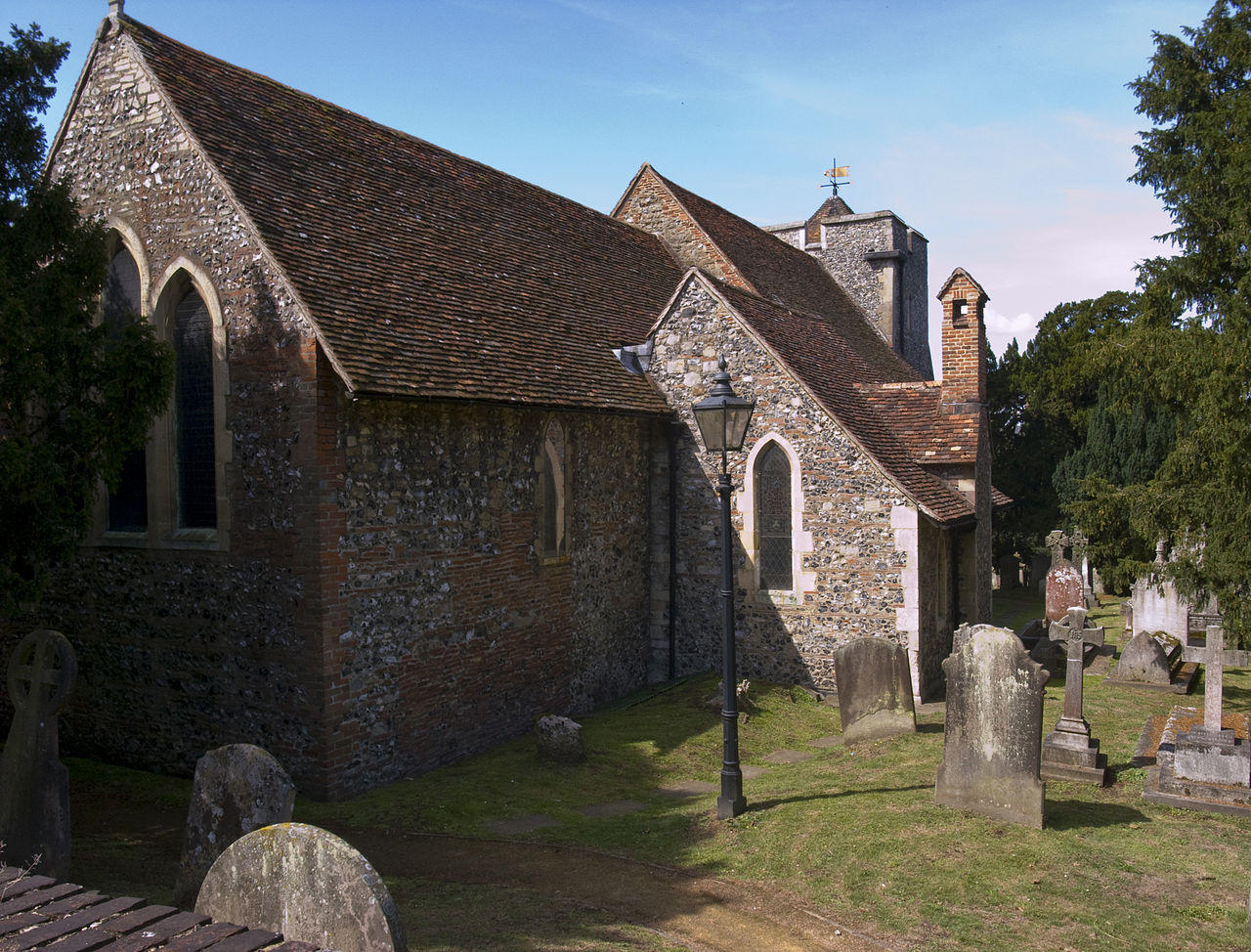L’église Saint Martin de Canterbury, dans le comté du Kent , est la plus vieille église d’Angleterre . Située à moins d’un kilomètre de la cathédrale de Canterbury , sa date de construction n’est pas très claire. Elle est liée à Saint Augustin de Canterbury qui a, soit réactivé le culte chrétien antérieur dans l’église, soit l’évêque envoyé par le pape Grégoire le Grand a crée totalement l’église. Mais Bède le Vénérable rappelle l’antériorité du lieu de culte: » Quand Augustin reçut le siège épiscopal dans la ville royale, il y restaura, avec l’aide du roi, une église qui, à ce qu’il avait appris, avait été bâtie là-même par les fidèles romains de jadis. Il la consacra au nom du saint Sauveur, notre Dieu et Seigneur Jésus Christ, et établit au même endroit un lieu d’habitation pour lui et tous ses successeurs. Il fit construire en outre non loin de la même ville, à l’Est, un monastère »
La construction de l’église matérialise la réintroduction du christianisme dans le sud de l’Angleterre par Saint Augustin, là même où la Reine Bertha priait déjà et où elle conduisit le roi Ethelbert à se convertir.
Depuis le VIème siècle et sans discontinuer, l’église Saint-Martin a été un lieu de culte, L’église Saint-Martin a été modifiée et agrandie aux VIème, VIIème et XIVème siècles, cependant le mur sud conserve toujours son style romain. Elle possède un font baptismal de forme tubulaire tout à fait exceptionnel.
L’église comme tout le complexe abbatial et cathédral de Canterbury est classée au patrimoine mondial de l’UNESCO.
St Martin’s Church in Canterbury, Kent, is the oldest church in England. It is less than a mile from Canterbury Cathedral and its date of construction is not clear. It is linked to St Augustine of Canterbury who either reactivated the earlier Christian worship in the church or the bishop sent by Pope Gregory the Great created the church entirely. However, Bede the Venerable recalls the prior existence of the place of worship: ‘When Augustine received the episcopal see in the royal city, he restored there, with the help of the king, a church which, as he had learned, had been built there by the Roman faithful of old. He consecrated it in the name of the holy Saviour, our God and Lord Jesus Christ, and established a dwelling place for himself and all his successors on the same spot. He also built a monastery not far from the same city, to the east.
The building of the church marks the reintroduction of Christianity to the south of England by St Augustine, where Queen Bertha was already praying and where she led King Ethelbert to convert.
St Martin’s has been a place of worship since the 6th century and has been altered and extended in the 6th, 7th and 14th centuries, although the south wall still retains its Roman style. It has an exceptional tubular baptismal font.
The church, like the entire abbey and cathedral complex in Canterbury, is a UNESCO World Heritage Site.

 "/>
"/>